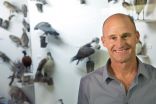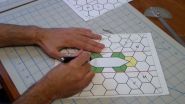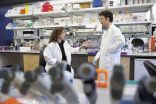(Press-News.org) NEW YORK, NY (December 11, 2014) Growing resistance to malaria drugs in Southeast Asia is caused by a single mutated gene inside the disease-causing Plasmodium falciparum parasite, according to a study led by David Fidock, PhD, professor of microbiology & immunology and of medical sciences (in medicine) at Columbia University Medical Center.
This finding provides public health officials around the world with a way to look for pockets of emerging resistance and potentially eliminate them before they spread.
Though malaria deaths have dropped by 30 percent worldwide since the introduction of artemisinin-based combination therapies (ACTs) in the late 1990s, these gains are now threatened by the emergence of resistance to the core artemisinin component of ACTs in Southeast Asia. No alternative therapy is currently available to replace ACTs should resistance spread to other parts of the world.
The study, published in Science, builds on a recent report that mutations in the gene--K13--are frequently found in drug-resistant parasites in Southeast Asia.
Dr. Fidock, working with scientists at the Pasteur Institutes in Paris and Cambodia, the University of Toulouse III, Sangamo Biosciences Inc., and the National Institutes of Health (NIH), showed definitively that K13 mutations directly cause drug resistance.
"The bad news about our finding is that it shows that resistance can arise through single mutations in one gene and pop up anywhere, at any time," Dr. Fidock says. "That's quite different from past instances with former first-line drugs, when complex sets of multiple mutations were required and resistance spread only as the mutated parasites spread."
The good news is that K13 mutations produce a relatively weak resistance. A related study published in the same issue of Science found that K13 mutations enable the parasite to hide in red blood cells in a developmental state that is naturally less vulnerable to artemisinin.
"This allows them to temporarily survive treatment, but it will not be enough for ACTs to fail across Africa, particularly as the partner drugs continue to be highly effective," Dr. Fidock says. "But it may be a foundation for parasites to evolve stronger degrees of resistance to these therapies, so we have to watch for increasing resistance very carefully."
Field reports suggest that not all K13 mutations are capable of causing resistance, and the genetic system developed by Dr. Fidock to study K13, based on DNA repair approaches that are being used in human gene therapy studies, will be critical in identifying real hot spots of resistance.
"There's been confusion in the field because multiple novel K13 mutations have been identified in Africa, but clinically we see no signs of resistance," he says. "Our system can now determine which of those pose the greatest threat."
INFORMATION:
About:
Other authors of the study are: Judith Straimer, Nina F. Gnädig, and Mélanie Dacheux (Columbia University Medical Center); Benoit Witkowski, Valentine Duru, Nimol Khim, Odile Mercereau-Puijalon, and Didier Ménard (Institut Pasteur); Chanaki Amaratunga and Rick M. Fairhurst (NIH); Arba Pramundita Ramadani and Françoise Benoit-Vical (Université de Toulouse); and Lei Zhang, Stephen Lam, Philip D. Gregory, and Fyodor D. Urnov (Sangamo BioSciences, Inc.).
The study was funded by the NIH (R01AI109023), the Intramural Research Program of the National Institute of Allergy and Infectious Diseases, the Agence Nationale de la Recherche and the Institut Pasteur.
The Columbia authors declare no competing financial interests. See paper for other authors.
Columbia University Medical Center provides international leadership in basic, preclinical, and clinical research; medical and health sciences education; and patient care. The medical center trains future leaders and includes the dedicated work of many physicians, scientists, public health professionals, dentists, and nurses at the College of Physicians and Surgeons, the Mailman School of Public Health, the College of Dental Medicine, the School of Nursing, the biomedical departments of the Graduate School of Arts and Sciences, and allied research centers and institutions. Columbia University Medical Center is home to the largest medical research enterprise in New York City and State and one of the largest faculty medical practices in the Northeast. For more information, visit cumc.columbia.edu or columbiadoctors.org.
Targeted therapies are a growing and groundbreaking field in cancer care in which drugs or other substances are designed to interfere with genes or molecules that control the growth and survival of cancer cells. Now, scientists at Virginia Commonwealth University Massey Cancer Center and VCU Institute of Molecular Medicine (VIMM) have identified a novel interaction between a microRNA and a gene that could lead to new therapies for the most common and deadly form of brain tumor, malignant glioma.
In a study recently published in the journal Neuro-Oncology, a team of scientists ...
Advances in treatment for human immunodeficiency virus (HIV) have made it possible for people with HIV to survive much longer. As they age, however, many experience impaired thinking, memory loss, mood swings and other evidence of impaired mental function.
To stop these changes, scientists have to learn what is causing them. One possibility researchers are considering is that long-term infections with other pathogens, common in HIV-positive patients, are affecting the brain. But a new study has eliminated one of their prime suspects: the hepatitis C virus, which infects ...
Lincoln, Neb., Dec. 11, 2104 -- A University of Nebraska-Lincoln researcher has contributed to discoveries about bird evolution as part of a new study that sequenced the complete genomes of 45 avian species.
Published Dec. 11 in the journal Science, the study found that avian genomes -- the complete archive of genetic material present in cells -- have exhibited surprisingly slow rates of evolution when compared with their mammalian counterparts.
Jay Storz, a Susan J. Rosowski Associate Professor of Biological Sciences, led a research group that assisted the study by examining ...
The fruits and vegetables provided at school deliver an important dietary boost to low income adolescents, according to Meghan Longacre, PhD and Madeline Dalton, PhD of Dartmouth Hitchcock's Norris Cotton Cancer Center and The Hood Center for Children and Families. In a study released in Preventive Medicine, Longacre and Dalton found that fruit and vegetable intake was higher among low income adolescents on days when they consumed meals at school compared to days when low income adolescent were not in school. The opposite was true for high income adolescents who consumed ...
PITTSBURGH--The 2013 Boston Marathon bombing motivated mass expressions of fear, solidarity, and sympathy toward Bostonians on social media networks around the world. In a recently released study, researchers at the University of Pittsburgh and Cornell University analyzed emotional reactions on Twitter in the hours and weeks following the attack.
The study is the first large-scale analysis of fear and social-support reactions from geographically distant communities following a terrorist attack. The findings show the extent to which communities outside of Boston expressed ...
Origami is capable of turning a simple sheet of paper into a pretty paper crane, but the principles behind the paper-folding art can also be applied to making a microfluidic device for a blood test, or for storing a satellite's solar panel in a rocket's cargo bay.
A team of University of Pennsylvania researchers is turning kirigami, a related art form that allows the paper to be cut, into a technique that can be applied equally to structures on those vastly divergent length scales.
In a new study, the researchers lay out the rules for folding and cutting a hexagonal ...
A CEO's natural sunny disposition can have an impact on the way the market reacts to announcements of company earnings, according to research from the University of British Columbia's Sauder School of Business.
The study shows that leaders' inclinations to express themselves with optimism carries over into their tone when disclosing company performance - a tendency that can create an uptick in stock price.
"Ours is the first study to look at the effect of how managers naturally convey themselves," says Sauder Assistant Professor Jenny Zhang, who co-authored the paper. ...
Senescent cells have a bad-guy reputation when it comes to aging. While cellular senescence - a process whereby cells permanently lose the ability to divide when they are stressed - suppresses cancer by halting the growth of premalignant cells, it is also suspected of driving the aging process. Senescent cells, which accumulate over time, release a continual cascade of inflammatory cytokines, chemokines, growth factors and proteases. It is a process that sets up the surrounding tissue for a host of maladies including arthritis, atherosclerosis and late life cancer. But ...
The ascetic and moralizing movements that spawned the world's major religious traditions--Buddhism, Islam, Judaism, Hinduism, and Christianity--all arose around the same time in three different regions, and researchers reporting in the Cell Press journal Current Biology on December 11 have now devised a statistical model based on history and human psychology that helps to explain why. The emergence of world religions, they say, was triggered by the rising standards of living in the great civilizations of Eurasia.
"One implication is that world religions and secular spiritualities ...
EMBARGOED for release Thursday, Dec. 11, 2014, at 12 p.m. ET
HOUSTON - (Dec. 11, 2014) - The ancient Japanese art of origami is based on the idea that nearly any design - a crane, an insect, a samurai warrior - can be made by taking the same blank sheet of paper and folding it in different ways.
The human body faces a similar problem. The genome inside every cell of the body is identical, but the body needs each cell to be different -an immune cell fights off infection; a cone cell helps the eye detect light; the heart's myocytes must beat endlessly.
Appearing online ...



